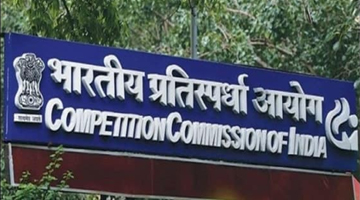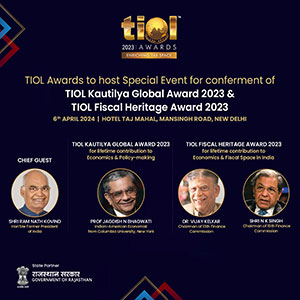Understanding intricacies of Minimum Alternate Tax
JUNE 18, 2007
By CA Sachin Jain
NORMALLY, a company is liable to pay tax on the income computed in accordance with the provisions of the income tax Act, but the profit and loss account of the company is prepared as per provisions of the Companies Act. There were large number of companies who had book profits as per their profit and loss account but were not paying any tax because income computed as per provisions of the income tax act was either nil or negative or insignificant. In such case, although the companies were showing book profits and declaring dividends to the shareholders, they were not paying any income tax. These companies are popularly known as Zero Tax companies.
In order to bring such companies under the income tax act net, section 115JA was introduced w.e.f assessment year 1997-98. According to this section, if the taxable income of a company computed under this Act, in respect of previous year 1996-97 and onwards is less than 30 % of its book profits, the total income of such company is chargeable to tax for the relevant previous year shall be deemed to an amount equal to 30 % of such book profits.
The Finance Act, 2000, inserted section 115JB of the Income-tax Act, 1961, with effect from 1-4-2001, i.e., from the assessment year 2001-02 providing for levy of Minimum Alternate Tax on companies. Section 115JB conceptually differs from erstwhile section 115JA, which provided for MAT on companies, so far as it does not deem any part or the whole of book profit as total income. However, the new provision of section 115JB provides that if tax payable on total income is less than 7.5% of book profit, the tax payable under this provision shall be 7.5% of book profit.
Computation of Book Profit :-
Book profit means the net profit as shown in the profit and loss account for the relevant previous year as increased by
- the amount of income-tax paid or payable,
- the amounts carried to any reserves, [other than a reserve specified under section 33AC;] or
- the amount set aside to provisions made for meeting liabilities, other than ascertained liabilities; or
- the amount by way of provision for losses of subsidiary companies; or
- the amount of dividends paid or proposed ; or
- the amount of expenditure relatable to any income to which section 10,other than secton 10(23G) or section 10A or section 10B or secton 11 or section 12 apply ; or
- the amount of depreciation, (Inserted by Finance Act,2006 ,w.e.f. 01-04-2007)
[ if any amount referred to in clauses ( 1 ) to ( 7 ) is debited to the profit and loss account, and as reduced by ]
• the amount withdrawn from any reserve or provision
• the amount of income to which any of the provisions of section 10, other than secton 10(23G) or section 10A or section 10B or secton 11 or section 12 apply, if any such amount is credited to the profit and loss account; or
• the amount of depreciation debited to the profit and loss account (excluding the depreciation on account of revaluation of assets) (Inserted by Finance Act,2006 ,w.e.f. 01-04-2007) ; or
• the amount withdrawn from revaluation reserve and credited to the profit and loss account, to the extent it does not exceed the amount of depreciation on account of revaluation of assets referred to in clause ( iia ) ( Inserted by Finance Act,2006 ,w.e.f. 01-04-2007 ) ; or
• the amount of loss brought forward or unabsorbed depreciation, whichever is less as per books of account.
Explanation .For the purposes of this clause,
( a ) the loss shall not include depreciation;
( b ) the provisions of this clause shall not apply if the amount of loss brought forward or unabsorbed depreciation is nil; or]
• the amount of profits eligible for deduction under Section 80HHC, 8OHHE, 80HHF
7. the amount of profits of sick industrial company
MAT Rate :-
|
S.No.
|
Section
|
Assessment Year
|
% Rate of MAT
|
| |
|
|
|
|
1
|
115JA
|
1997-98 to 2000-2001
|
30 % of Book Profit
|
| |
|
|
|
|
2
|
115JB
|
2001-2002 to 2006-2007
|
7.5 % of Book Profit
|
| |
|
|
|
|
3
|
115JB
|
2007-2008 and 2008-2009
|
10% of the book profit.
|
Procedure for Computation of MAT u/s 115JB :-
The provisions of section 115JB provide for working out the income-tax payable as MAT on a deeming basis. The MAT tax liability under section 115JB can be worked out by undergoing the following steps:-
- Compute the total income of the company (ignoring the provisions of u/s115JB).
- Compute the income-tax payable on total income is worked out under (i) above.
- Work out the Book Profit under the provisions of section 115JB.
- Calculate 10 per cent of book profit (as per provisions of section 115JB).
- MAT tax liability as worked out under (iv) above would be the tax payable if it is more than the amount of tax worked out (ii) above.
A numerical illustration:-
ABC Ltd. had its computed total income at Rs.100 lakhs and its book profit as computed under section 115JB is Rs.600 lakhs. In such an event, the following would be the calculation of MAT tax liability under section 115JB for assessment year 2007-2008 as discussed above :
|
i)
|
Total Income
|
= Rs.100 lakhs
|
|
ii)
|
33.66% of total income being tax payable
(30%+10% surcharge+2% E.Cess)
|
= Rs.33.66 lakhs
|
|
iii)
|
Book Profit
|
= Rs.600 lakhs
|
|
iv)
|
11.22% of the Book Profit
(10% + 10% surcharge + 2% E.Cess)
|
= Rs.67.32 lakhs
|
|
v)
|
Income tax payable under MAT (since higher than tax on total income at (ii) above)
|
= Rs.67.32 lakhs
|
Hence, the tax payable by ABC Ltd. for assessment year 2007-08 would be Rs.67.32 lakhs since the tax payable on book profit under section 115JB is higher than the tax payable on computed Total Income
MAT Credit :-
As per section 115JAA, MAT credit can be carried forward for set-off against regular tax payable during the subsequent years subject to certain conditions, as under:-
- If MAT is paid u/s 115JA its credit can be carried forward and utilized Five assessment year immediately succeeding the assessment year in which tax credit becomes allowable under sub-section (1) of section 115JAA.
- If MAT is paid u/s 115JB its credit can be carried forward and utilized Seven assessment year immediately succeeding the assessment year in which tax credit becomes allowable under sub-section (1A) of section 115JAA. (Inserted by Finance Act,2006 ,w.e.f. 01-04-2007)
- The credit allowed will not bear any interest.
A numerical illustration:-
|
A.Y.
|
Normal tax liability
|
Tax liability u/s. 115JB
|
Tax payable by the assessee [Higher of (2) and (3)]
|
Additional tax liability
(4) - (2)
|
Credit u/s. 115JAA utilised
|
Credit available for carry forward
|
|
(1)
|
(2)
|
(3)
|
(4)
|
(5)
|
(6)
|
(7)
|
|
2006-07
|
100
|
300
|
300
|
200
|
-
|
200
|
|
2007-08
|
120
|
90
|
120
|
NIL
|
30 #
|
170
|
|
2008-09
|
150
|
110
|
150
|
NIL
|
40
|
130
|
|
2009-10
|
180
|
200
|
200
|
20
|
-
|
150
|
|
2010-11
|
200
|
150
|
200
|
NIL
|
50
|
100
|
|
2011-12
|
225
|
175
|
225
|
NIL
|
50
|
50*
|
# Even though credit of 200 is available, only 30 can be utilised so that the tax payable by the assessee does not go below the amount computed u/s. 115JB.
* out of the credit of 50, 30 is belonging to A.Y. 2006-07 and 20 belongs to A.Y. 2009-10. In view of provisions of sub-section (3) of section 115JAA the credit of 30 will not be allowable after A.Y. 2011-12 and would accordingly lapse. However, credit of 20 pertaining to A.Y. 2009-10 would be allowed to be carried forward till A.Y. 2014-15.
Special Provision for Certain Companies :-
Special provisions were set in the statute to provide complete tax holiday for newly established undertakings in FTZ, EHTP, STP (Section 10A) and for newly established 100% export-oriented undertakings (Section 10B). This complete tax holiday is available for first 10 assessment years. Units covered under Section 10A and Section 10 B were immune from the levy of MAT. Also income accrued or arising after 31st March 2005 from any business / services set up in SEZ was exempted from levy of MAT.
Proposal in Budget 2007-2008 :-
The extension of the minimum alternate tax (MAT) regime to income streams, which in the normal course are exempt, appears to be a continuing trend. This year the budget has proposed to extend the MAT provisions to companies engaged in inter alia the IT and BPO sectors that are availing tax deduction under section 10A and 10B of the Income-Tax Act, 1961 (Act).
The Budget also does not extend the sunset clause under section 10B of the Income-Tax Act, which allows EOUs to avail 100% tax exemption on export earnings after March 31, 2009. The commerce ministry has been lobbying to exempt EOUs from income-tax for another ten years after March 2009.
The tax paid under MAT can be carried forward as a credit and offset against the normal corporate tax liability for a period of seven financial years. In light of the sunset provision contained in section 10A of the Act, which prescribes a date of March 31, 2009, on which the tax holiday scheme expires, the introduction of MAT for the IT and BPO sector is likely to represent at most a cash flow issue. The MAT impact may also be neutralised on account of foreign tax credits that are offset against MAT payable.
Payment of Advance tax :-
All companies are liable for payment of advance tax having regard to the provisions contained in new section 115JB. Consequently, the provisions of sections 234B and 234C for interest on defaults in payment of advance tax and deferment of advance tax would also be applicable where facts of the case warrant
Procedure for Income Tax Return :-
Every company to which this section applies, shall furnish a report in the prescribed form (Form 29B) from an accountant as defined in the Explanation below sub-section (2) of Section 288, certifying that the book profit has been computed in accordance with the provisions of this section along with the return of income filed under sub-section (1) of Section 139 or along with the return of income furnished in response to a notice under clause ( i ) of sub-section (1) of section 142.
(The views expressed are personal of the author, working with a corporate)
(The views expressed are personal of the author)















